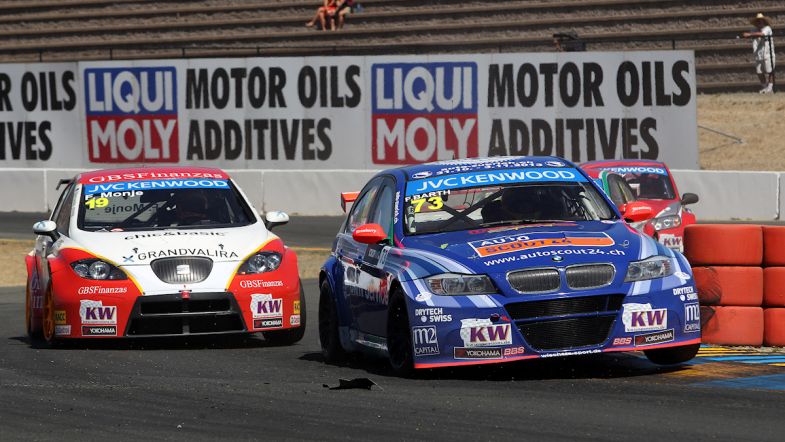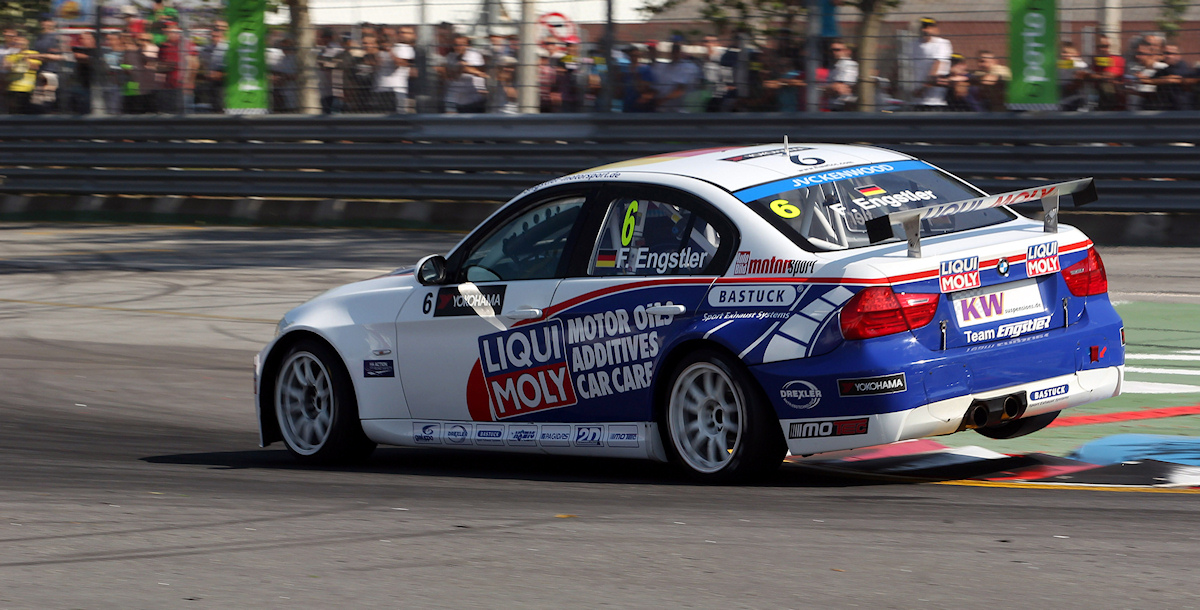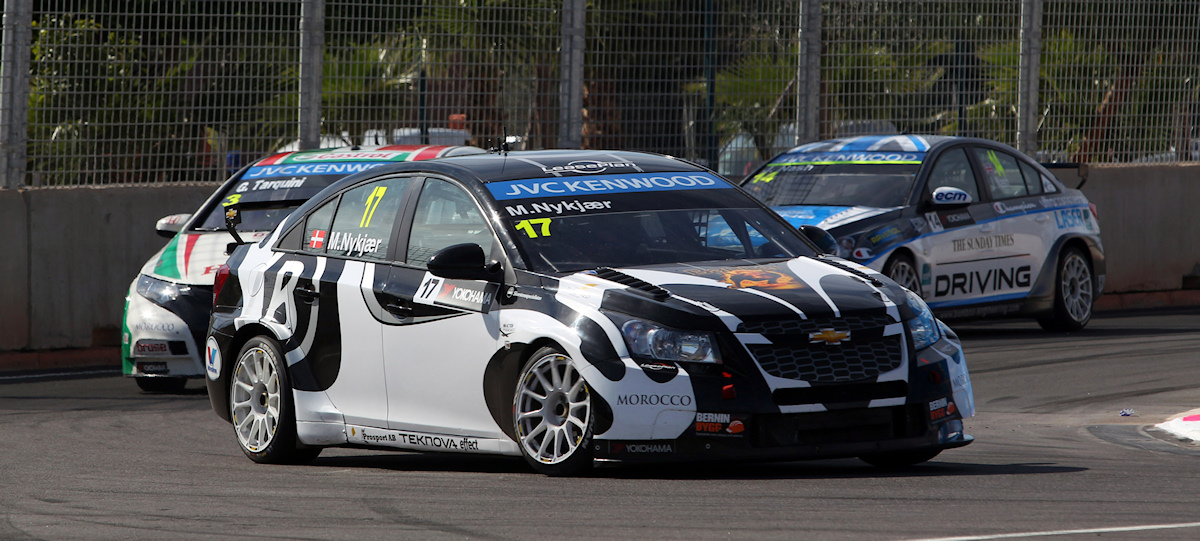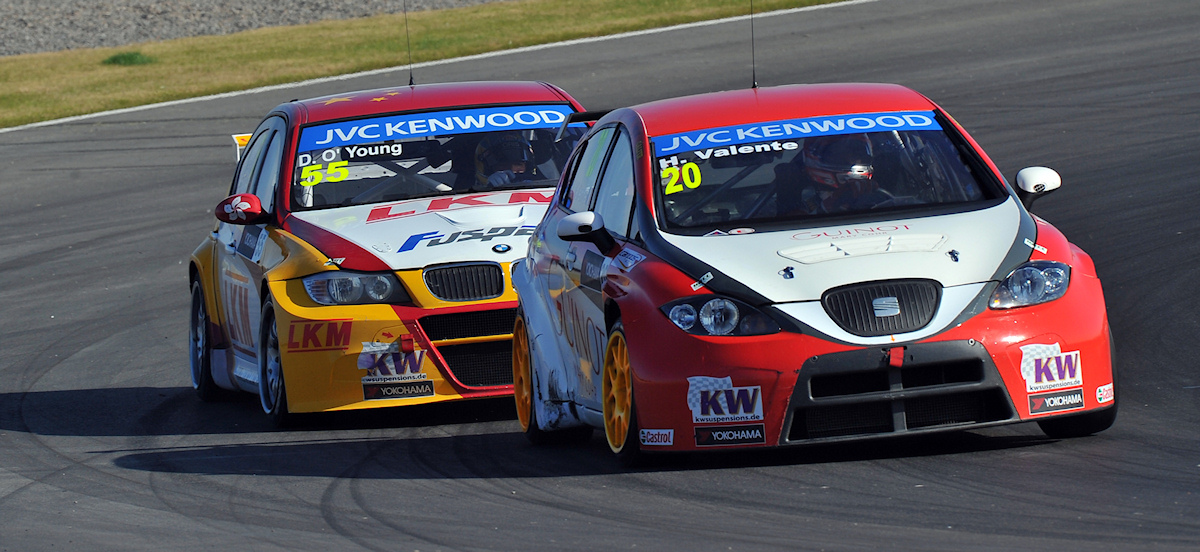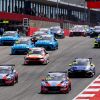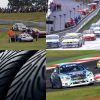What’s happening with the Yokohama Trophy class?
In the 2014 FIA World Touring Car Championship, the Yokohama Trophy will be awarded to the 2014 ‘TC2’ class champion. We’ve been talking about TC1 and TC2 a bit more recently, and it’s probably best to explain what this means a little more. It’s more of a rebadging of the different car regulations from the 2014 touring car season onwards, with a new type of car set to jump ahead of the current cars in terms of performance, which will take on the TC1 title, with the outgoing chassis/engine combination (used from 2011 to 2013), now badged as TC2.
The change is in line with the naming conventions that will also be used in the FIA World Rally Championship from 2014, and have already been used in GT sports car racing in recent years. In the case of GTs, the GT1 class was for the most powerful cars up until the end of 2011, GT2 was the next tier down (which along with GT1 has now fallen into disuse) followed by GT3, which was originally the third tier, but has now almost become the international in sports car racing.
Rallying will use the same format, with RC1 referring to the top WRC-spec cars used in events, and RC2 for the second tier cars, usually competing in WRC2, such as R5 or Regional Rally Cars (RRC).
In touring cars, the original terminology was becoming overly complicated. For example, the class of cars used in the 2013 WTCC season were officially known as “Super 2000 Appendix J Article 263 2011” cars, which doesn’t quite roll off the tongue.
So from 2014, the class gets a bit of an easier moniker (though the technical terminology will still exist). TC1 will refer to cars which have been built to the latest regulations for 2014, with cars already confirmed to be being built by Citroën, Honda, Lada and Chevrolet (by RML).
The cars which have been used between 2011 and 2013, with some chassis which are often even older than that but fitted with newer 1.6 litre turbocharged engines, will be referred to as TC2, and will be used in a few other series such as the FIA European Touring Car Cup and Germany’s ADAC Procar Series.
It is that class which will compete for the Yokohama Trophy next year, which has its own prize fund. In recent years the class has somewhat inconsistently referred to smaller teams or less experienced drivers competing in the championship, and up until 2011 was known as the Yokohama Independents’ Trophy.
It’s worth noting that change, as it hasn’t been the “independents'” trophy now for a full three years. The term ‘independent’ has generally fallen into disuse in the WTCC. Last year’s Yokohama Trophy champion was James Nash, but by any normal use of the term independent in motorsport, the overall champion Yvan Muller was effectively independent himself, with his RML team competing with no financial support whatsoever from Chevrolet after the US manufacturer’s withdrawal at the end of the previous year.
The two drivers who finished first and second in the 2012 season’s Yokohama Trophy, Norbert Michelisz and Pepe Oriola, had also both been removed from the Trophy class for 2013, despite neither driver having a factory deal of any sort. In addition to Michelisz and Oriola, drivers who could also be considered to be independent this year, but weren’t eligible for the Trophy included Tom Coronel, Tom Chilton, Rickard Rydell, Marc Basseng and 2012 champion Rob Huff.
The independents’ trophy was always about the underdog drivers and teams in the Championship; back markers who had little chance to shine up front without the budgets of the manufacturers or the latest equipment. But while there’s been a lull in manufacturer entries in recent years, with SEAT leaving at the end of 2009, BMW in 2010 and Chevrolet in 2012, independent drivers have enjoyed a very notable surge forward on the grid.
The first driver to win a race who was classified in the Yokohama Trophy was Franz Engstler, winning at Oscshersleben just two years ago. In 2012, there were three more wins for Yokohama Trophy drivers, with one for Norbert Michelisz and two for Stefano D’Aste.
This year, that number doubled to six, with three wins for the Danish driver Michel Nykjaer, two for James Nash and one for José María López.
With the TC2 class becoming the Yokohama Trophy in 2014, and with the manufacturers dominating the TC1 class with 3-4 cars for Citroën, four for Honda and three for Lada, it’s likely the pre-2011 form book will be restored, with overall victory no longer a reachable target for the Trophy drivers, and their focus will be shifted from the potential glory of race victories and top five positions in the standings, to winning in their own class.
That doesn’t mean there won’t be independent teams in TC1 though. The Hungarian Zengõ Motorsport team will field a new Honda Civic for Norbert Michelisz, the Italian Proteam Racing squad another Civic for Moroccan Mehdi Bennani, purchasing their cars from Honda and running as a satellite team.
And then there are the four+ cars built by RML for customers only, based on the Chevrolet Cruze which has dominated the Championship since 2010. So far two are headed to Campos Racing, and two to ROAL Motorsport. Two proficient teams who have enjoyed close links with manufacturers SEAT and BMW in the past respectively, but still function as fully independent operations.
In TC2, any of the current teams who can’t find the budget to buy one of few remaining TC1 type cars are set to be there in 2014. It’s also understood that the 2010-2013 winning Chevrolet Cruze 1.6T will be outlawed from the class to ensure none of these longstanding supporters of the WTCC are effectively gazumped by new teams with the budget to buy them. A similar move was made in 2010, when the all-conquering SEAT León TDI, which had dominated the 2008 and 2009 seasons, was banned from the independents’ class, though was allowed to compete in its own category.
TC2 will therefore see the teams that still have older SEATs and BMWs with the 2011 engine upgrades competing, which is likely to include Wiechers-Sport, Liqui-Moly Team Engstler and Special Tuning Racing, as well as second tier cars from Campos Racing and perhaps Proteam, who will also be running cars in TC1. Though there are still a few TC1 cars which some teams may be able to acquire for next season.
These changes for 2014 will reset the rise of the independents that has been seen in the last three years, which has seen a lot of outright success for drivers who might otherwise have gone unnoticed behind a field of manufacturer cars. But from 2014, the WTCC is putting the manufacturers back at the front, and you’re going to have to deliberately pay attention further down the order to follow the smaller teams again, as they won’t be getting in the way of the cars with the manufacturer logos on them anymore.
Which is what most fans would usually expect to see; it’s certainly what the manufacturers would want, but those ‘independents’ themselves might not feel to great about it – and indeed some of the current drivers really don’t want to fight in a second tier and will go somewhere else, at least until more of the new cars become available in 2015.
